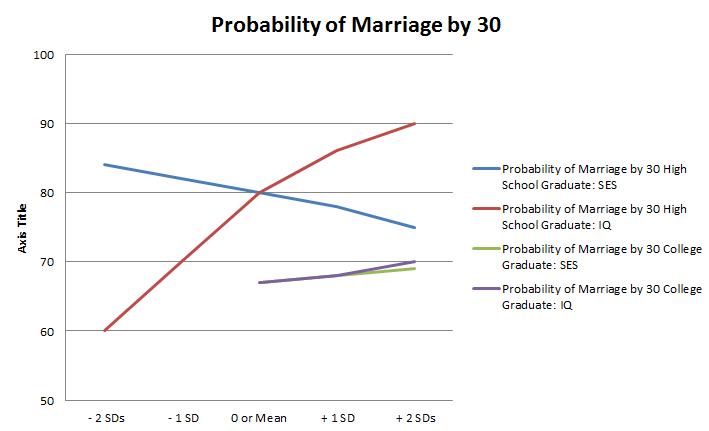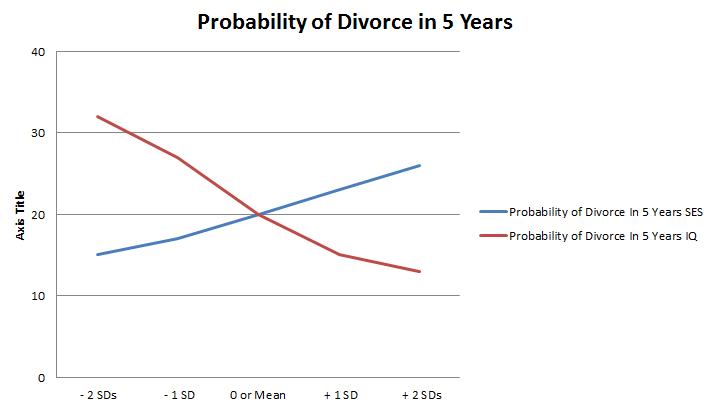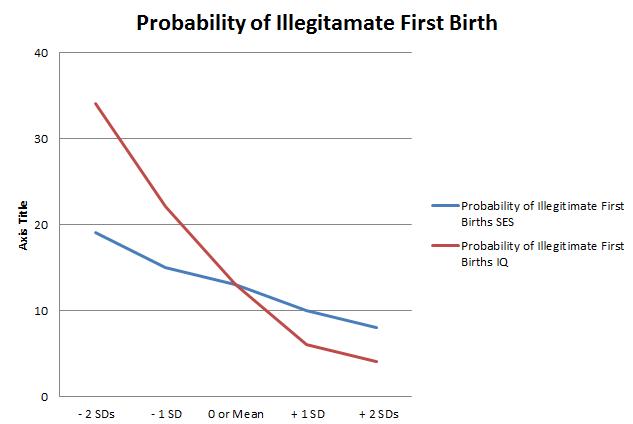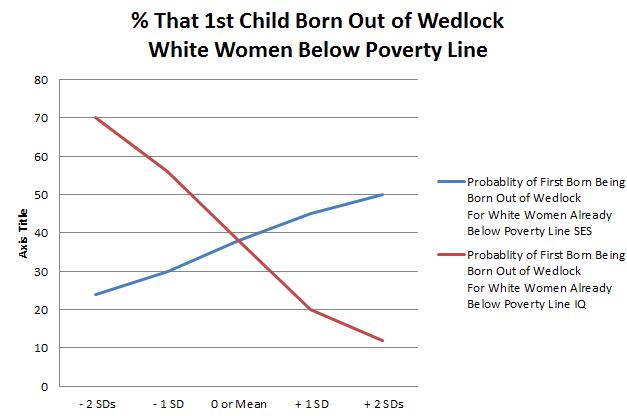The election, work and a jammed family schedule have impacted not only the amount of recent blogging but the subject matter as well. It’s been over a month since my last installment of the impact of IQ on the conditions of all of us.
The Impact of IQ on Family Matters
I’ve gone over subjects such as poverty, education and employment. I’ve taken an approach that first shows the impact of the socioeconomic status of the folks involved; sometimes the parents or family and sometimes the individual himself. Then I’ve come back to show what the circumstances look like when the population has been described in terms of IQ. So far, to me, the differences are stunning.
Today I look to continue this by checking out the family.
Marriage
Because of the massive positive impact that being married has on society, it’s important to track who is getting married, when and why. Earlier I showed a chart that described the state of folks at 30. And because of the natural tendency of education to suppress marriage, both high school only and college graduates were displayed. The chart below now includes taking IQ into account:
 Most likely due to the fact that college is highly tracked to IQ, the differences don’t really matter. But looking at the IQ of individuals without college education the impact i s large. Of those with average IQs, 80% are married by 30. Compare this with those of very low cognitive ability and their rate of 60%.
Most likely due to the fact that college is highly tracked to IQ, the differences don’t really matter. But looking at the IQ of individuals without college education the impact i s large. Of those with average IQs, 80% are married by 30. Compare this with those of very low cognitive ability and their rate of 60%.
As I mentioned before, if marriage is important, then so is divorce. And what does the comparison show? Look:
The trends are interesting. As individuals become wealthier, they are more likely to end their marriages in divorce. But in a completely opposite way and manner, as the IQ of the folks increases, their likelihood of divorce decreases.
The subject of marriage is important because of the impact to the lives of the children of those families. Because of this importance, it is required to look at the circumstances of birth. Specifically illegitimate births.
The data are clear. While the impact of the SES status is important, the top to bottom difference is 10 points, the impact of the IQ is even higher. Where SES can show a 2 to 1 ratio, IQ shows a 7 to 1 ratio.
The last comparison is that of illegitimate births to white women already below the poverty line. The data shows that as SES status increases so does the probability that a child is born out of wedlock. If we include IQ?
Massive.
In perhaps the most glaring demonstration of the impact of IQ, this metric shows that women with higher cognitive ability avoid births out of wedlock at remarkable levels while women with lower cognitive ability are much less likely to avoid this condition.
In each of the 4 comparisons, IQ is shown to have a positive impact on the favorable conditions expected. In some cases moderate, in others dramatic.
Next up – we look at the impact of IQ compared to SES and welfare.




